Liverpool came to Old Trafford with the opportunity to move above Man City if they gained at least one point against in-form Manchester United. Liverpool’s game plan against the big sides is to often look to draw, as one point is better than none.
And Liverpool did in fact just this. Undoubtedly this game could have been a much more exciting fixture in terms of goals, but the game wasn’t boring from a tactical perspective. It was like a game of chess; Solskjaer vs Klopp, Scouse vs Manc.
Whilst Klopp’s men dominated possession, this didn’t equate to superior chances. United finished with an xG of 0.72, massively higher than Liverpool’s measly xG of 0.09. To put both statistics to into perspective, Premier League strugglers Cardiff’s xG in a 4-1 loss to Chelsea was 0.78.
So whilst this game wasn’t full of goals, or much real entertainment, there were some significant events to discuss in this tactical analysis.
How they lined up
Both teams offered no shocks in terms of tactical shapes, but the choice of personnel from either side was thought provoking to say the least.
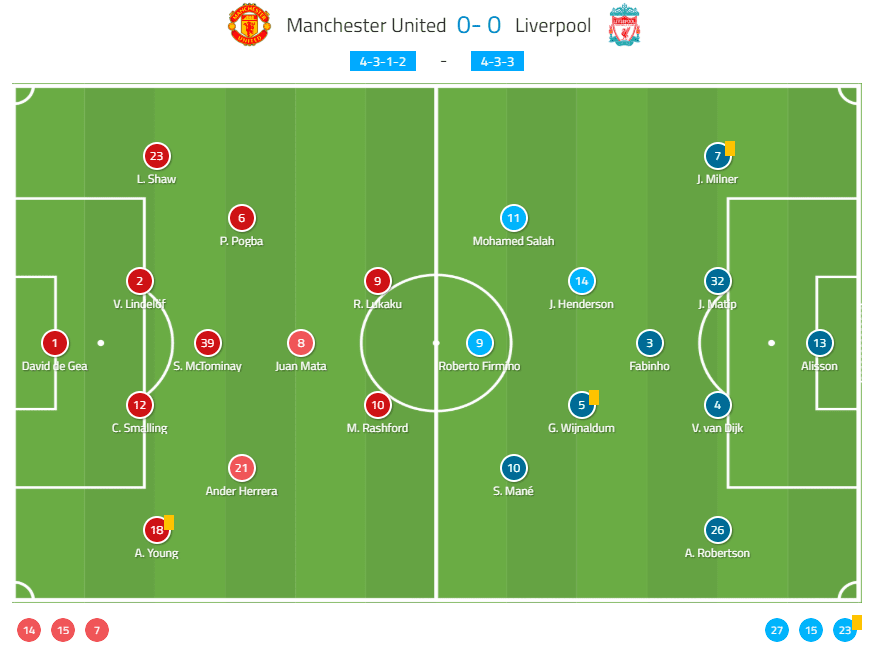
I’d like to point out James Milner as a player of interest. His use at right-back was a smart tactical move by Klopp. Milner was used in a highly advanced role, and this was done to near perfection. As you can see above, United only play with one wide player on either flank: their full-backs. Klopp used James Milner as a pawn, by pushing him so high that Luke Shaw was forced to occupy him, allowing Salah to theoretically have much more room to manoeuvre.
Boring James Milner
The Englishman had quite the job in this derby. To some though, his position in the starting lineup over Trent Alexander-Arnold was a shock. Alexander-Arnold wasn’t dropped; this was a tactical choice. Let’s look into this tactical decision more deeply.
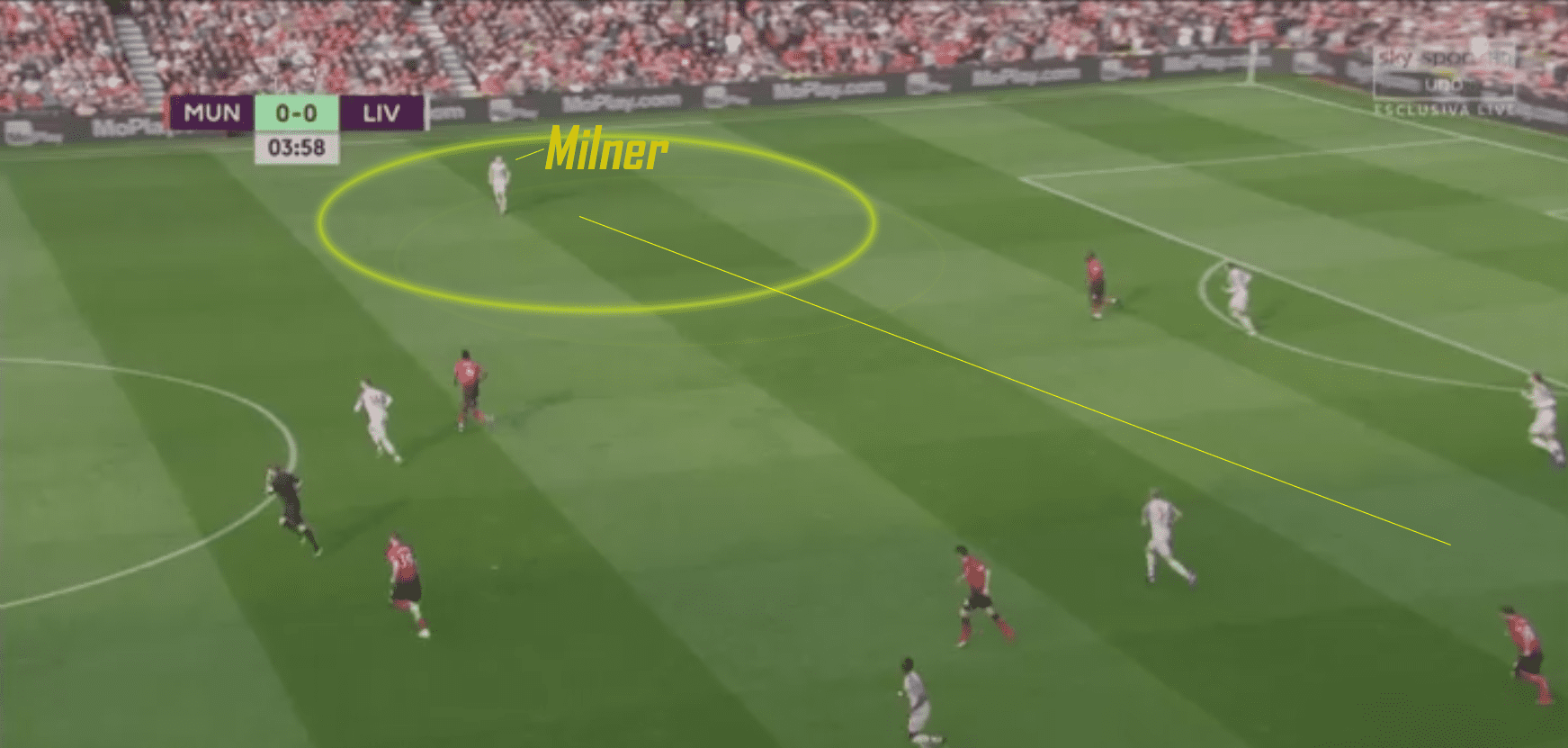
As United like to compress the play into a very narrow area, Klopp needed someone with a cool and intelligent head to receive long balls to relieve the intense press. Milner has this. He is an experienced player who excels in high-pressure games, whilst Alexander-Arnold is younger and less experienced in big games.
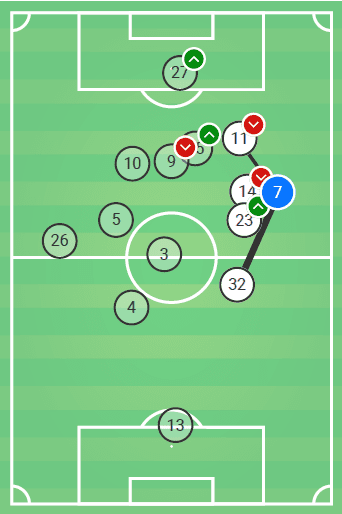
As we can see above, Milner is incredibly high up, but also very narrow. We can also see from the thickness of the lines going to and from Milner that the majority of play whilst in possession was directed down the right flank.
In case that wasn’t enough to paint a picture in your mind, here’s Liverpool’s pass-map over 90 minutes.
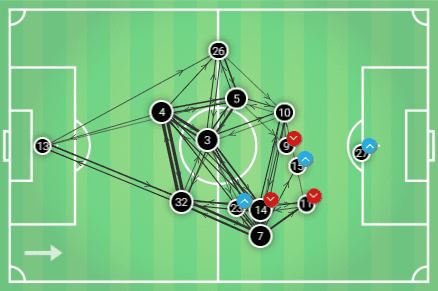
Again, look at Andy Robertson (#26). Then look across the pitch at see James Milner (#7). From the thickness of the line that indicates how common a pass is, it’s evident that Liverpool focused their play down the right flank. We can also see how narrow the attacking trident is on the right-wing. As United play with one player on either flank, this gave Liverpool a 3v1 numerical advantage in the wide spaces.
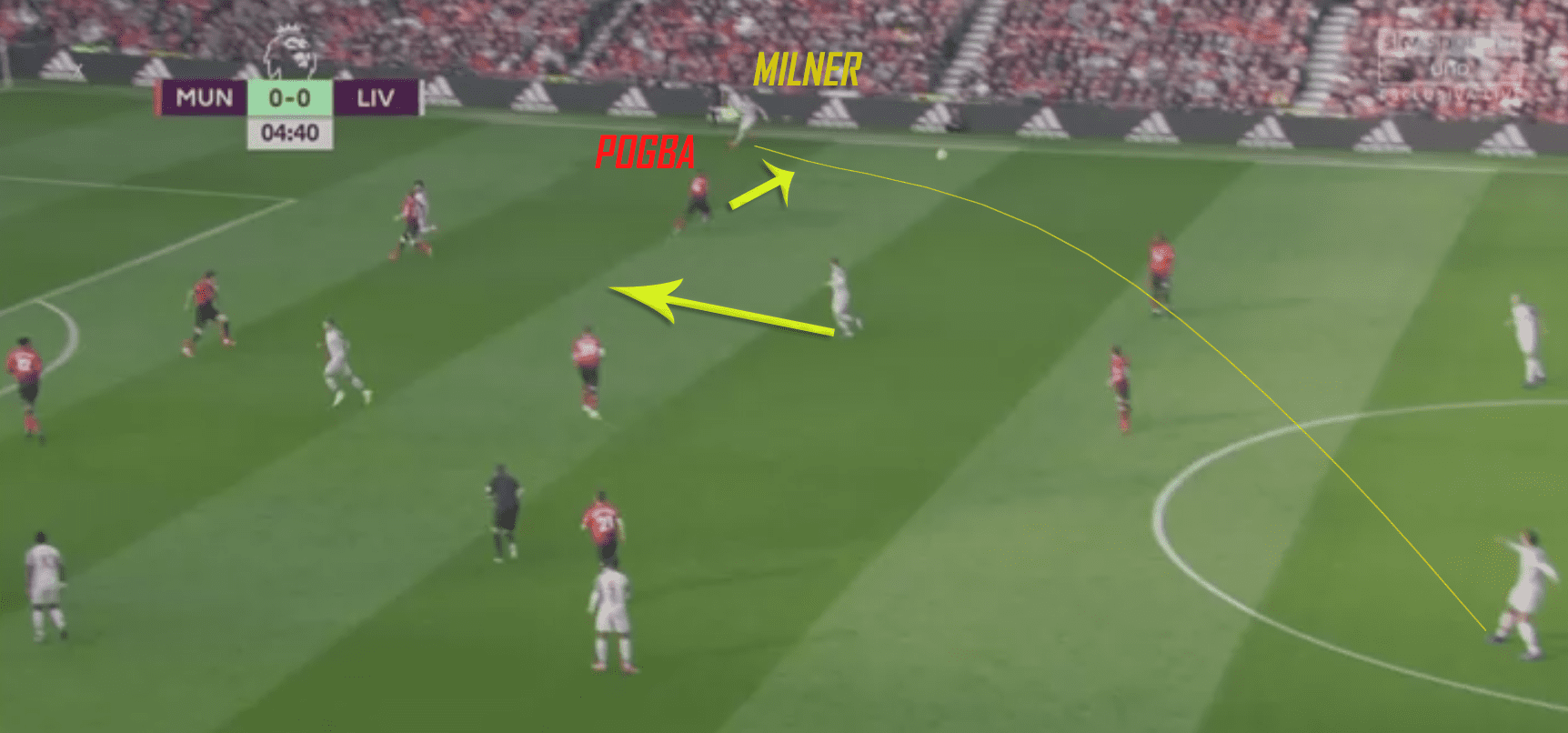
This tactic was disrupted by the injuries of Herrera, Mata and Lingard as Solskjaer’s men switched to a 4-1-4-1, offering them enough depth in the wide areas to make this tactic useless. If truth be told, Salah and Wijnaldum had to do more to make this tactic a genuine danger. Milner alone couldn’t offer a serious threat without the other players on the right side of the pitch doing their part.
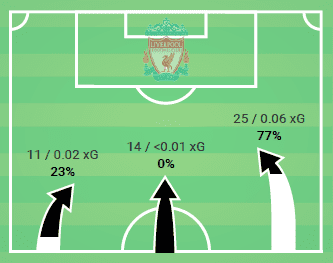
As we can see above, whilst Liverpool were in fact more dangerous down the right wing, they were still embarrassingly poor.
Possession doesn’t win games
Liverpool had an impressive average of 62% of possession. That’s quite incredible, but they didn’t have control of the game. With an xG of 0.09, they may have kept the ball, but they didn’t dominate.
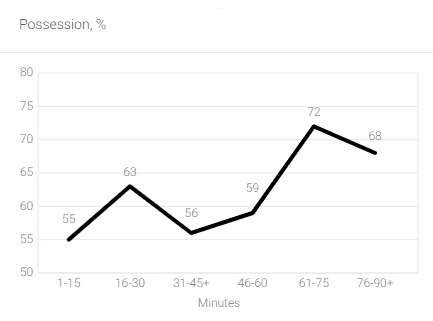
From the first injury, we saw Liverpool’s possession sky-rocket. This was due to United’s intense central press being disrupted. Despite all this domination, Liverpool still only managed to have only two players take a touch in the box: Mane and Salah.
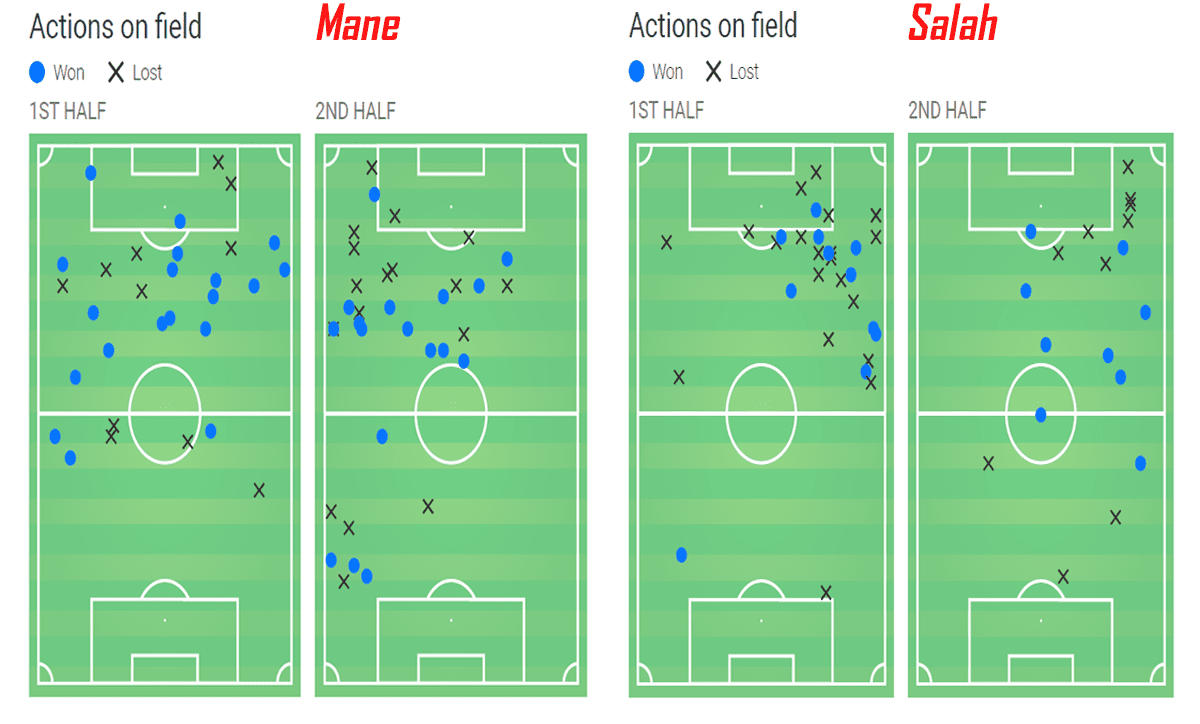
With such little action in the box from their two star men, it’s not difficult to understand why Liverpool had such an embarrassing xG. With five shots in total, of which just one was on target, they had a tough time against a newly resilient Manchester United.
Liverpool really should have tried to attack the ball more through their left side. With United having Ashley Young and Romelu Lukaku on the right flank, Ole’s men weren’t exactly blessed for energy and work-rate on the right side.
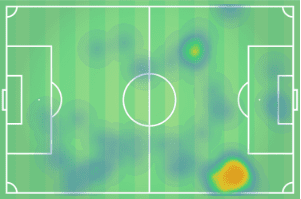
Shown above is Lukaku’s heatmap whilst playing on the right wing. He’s not exactly the most energetic player in the first place, and if you move him to a more anaerobically-intensive role, you’re going to see your team leave gaps out wide – and they did. It was baffling as to why Liverpool didn’t exploit this more, as it’s debatable that Manchester United have a more obvious weakness.
United prove hard to beat
Jurgen Klopp had this to say afterwards.
“It was a strange game. We started really well. All the injuries in the game obviously cost us rhythm. It happened to us with Bobby and that was a catastrophe. United played with a completely new midfield and three up front. We lost our rhythm and couldn’t get it back. On days when United are beatable you have to do it and we didn’t do it. We have a point more and Wednesday is our next game.”
Though it may just seem like Klopp was whining, he did actually have a point. Liverpool’s game was shaped around an expected United team which was delivered until both team’s injury crises. The change to go from a 4-4-2 diamond to a 4-1-4-1 for Ole Gunnar Solskjaer changed the dynamic of the game, and allowed United to match Liverpool numerically out wide.
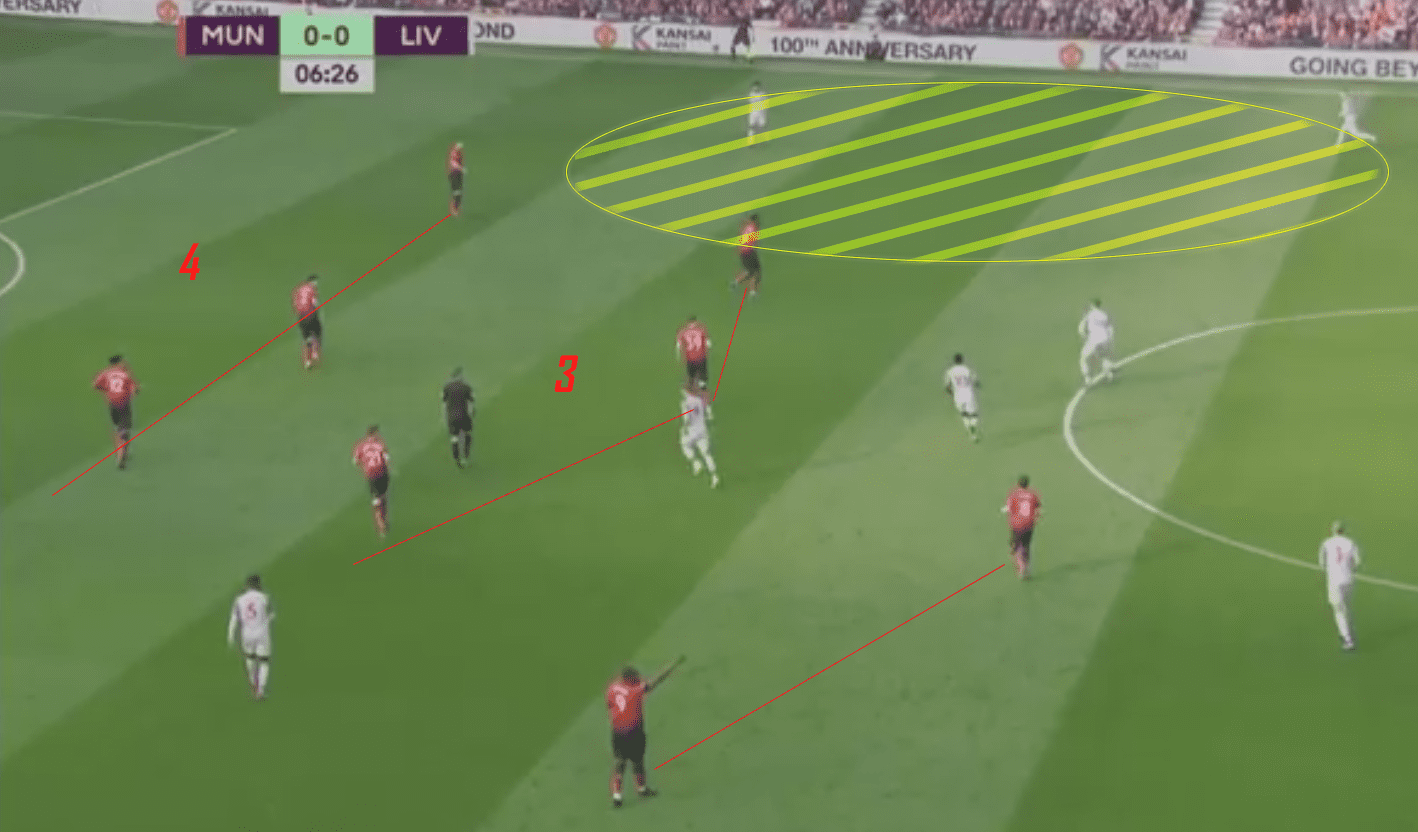
This was the system every coach and analyst alike expected from Manchester United, and it was used until the United injury saga took hold of the game.
As we can see, United like to keep compact and narrow, inviting opposition teams to play around them. And Liverpool certainly attempted this, with the game plan of having Milner being press incredibly high up the pitch seeming to work. Then came three injuries within 15 minutes, forcing Ole Gunnar Solsjaer to drastically change his side and move to a 4-1-4-1 that severely disrupted Liverpool’s trained tactical plans.
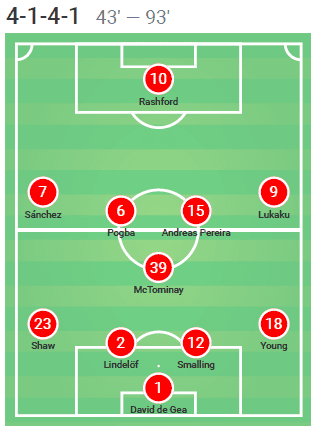
Above we can see United’s in-game tactical switch. This still preserved their midfield structure, but it also added strength to their wide defensive zones.
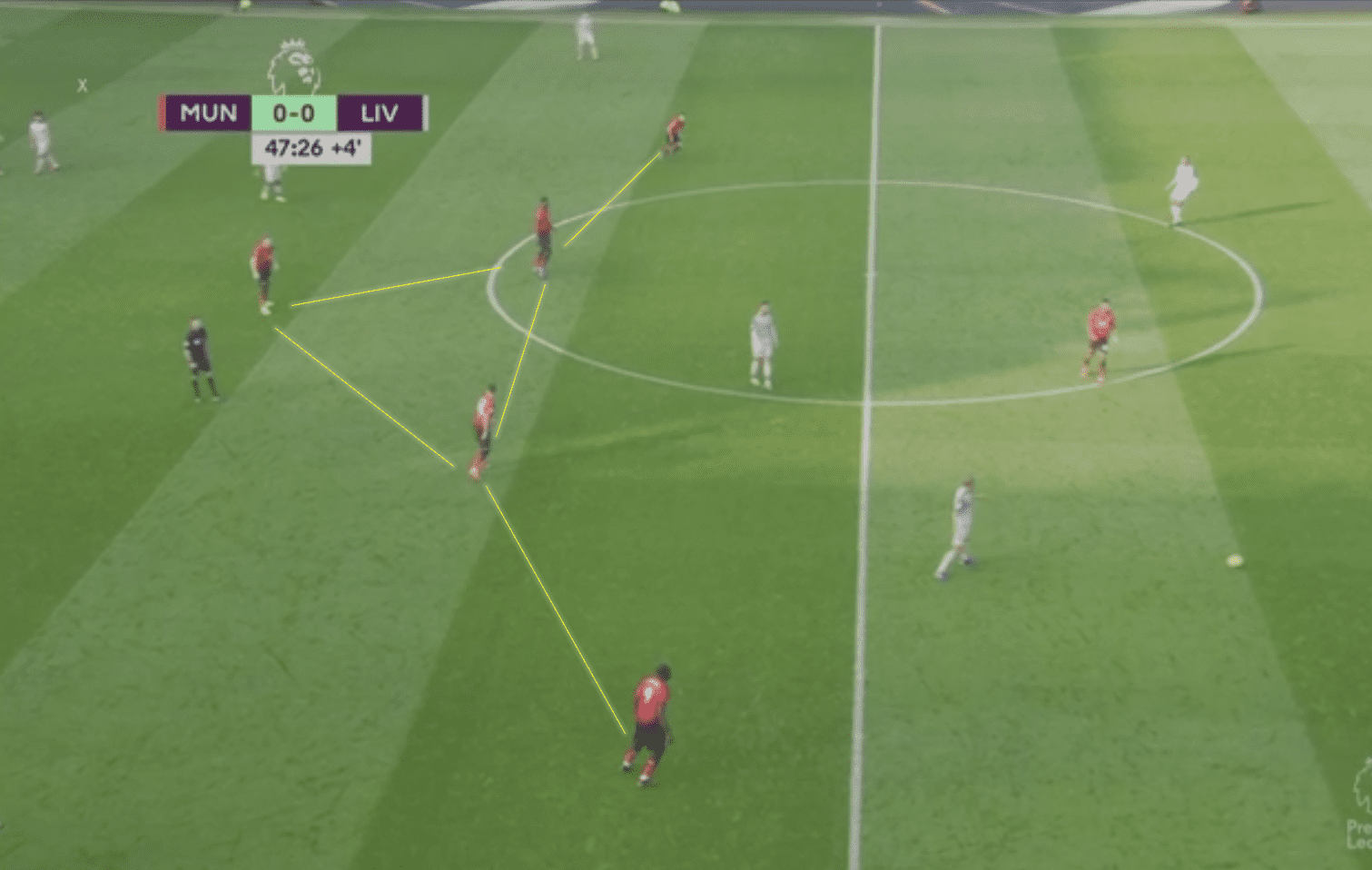
This incredibly defensively sound formation routinely forced Liverpool to go long. United’s average height it quite massive in comparison to Liverpool’s. United players stand at an average height of 185cm (6″1′), significantly taller than Liverpool’s average of 181cm (5″10′). Due to the Red Devils having the height advantage, they were able to win the aerial battles and counter-attack through the wide spaces at a fast pace. However, Liverpool had a trick up their sleeve allowing them to minimise any threat United possessed.
Press when needed
Klopp’s Liverpool team don’t press the top sides as relentlessly. They decided to allow United to keep the ball when the ball was being built out from the back, but intelligently marked any space that they would want to play into.
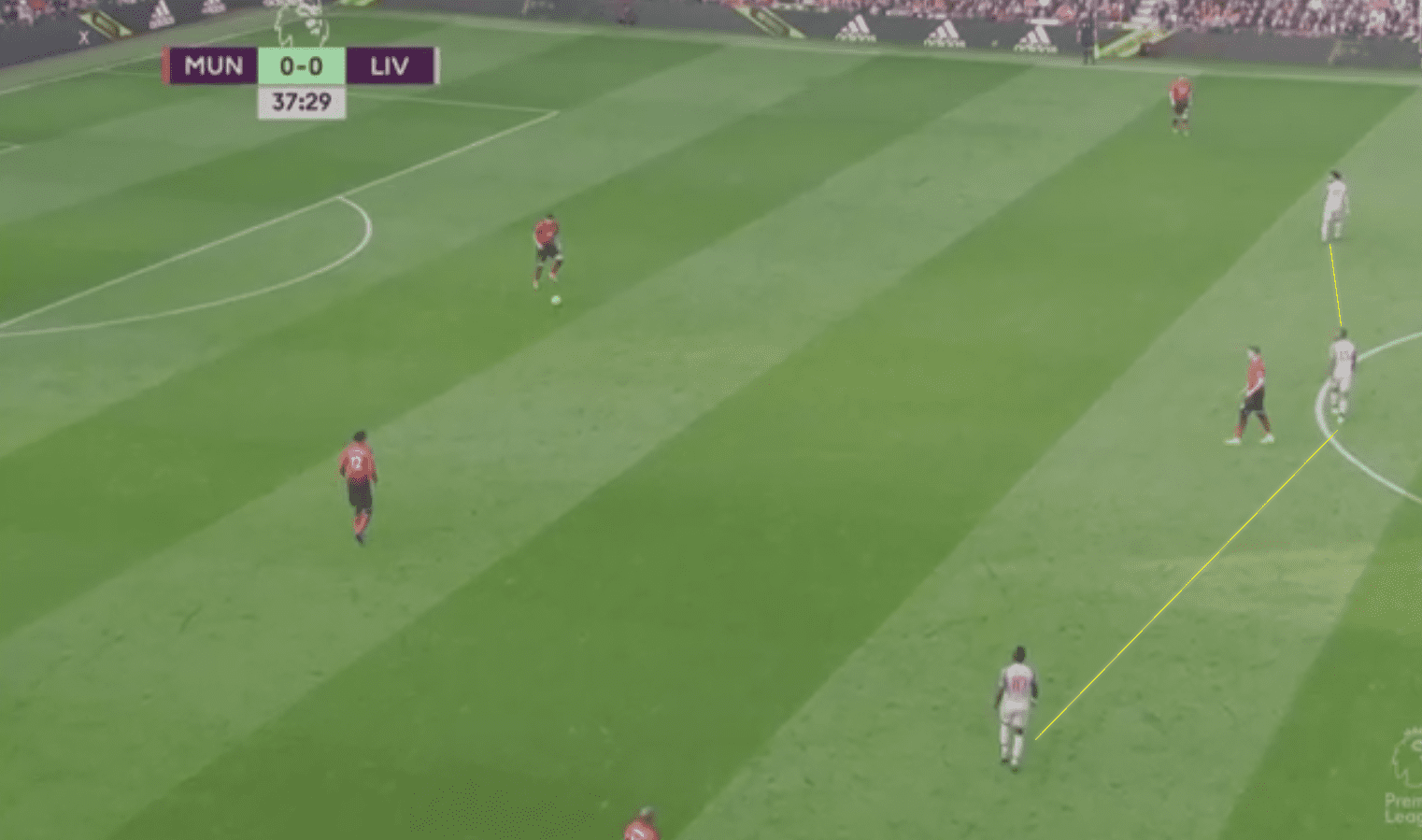
Liverpool’s front three block off any pass going into the midfield, including the half-spaces. Manchester United were able to just play it into the wide-channels, but look what happens next: the polar opposite to Liverpool’s fairly relaxed system shown above.
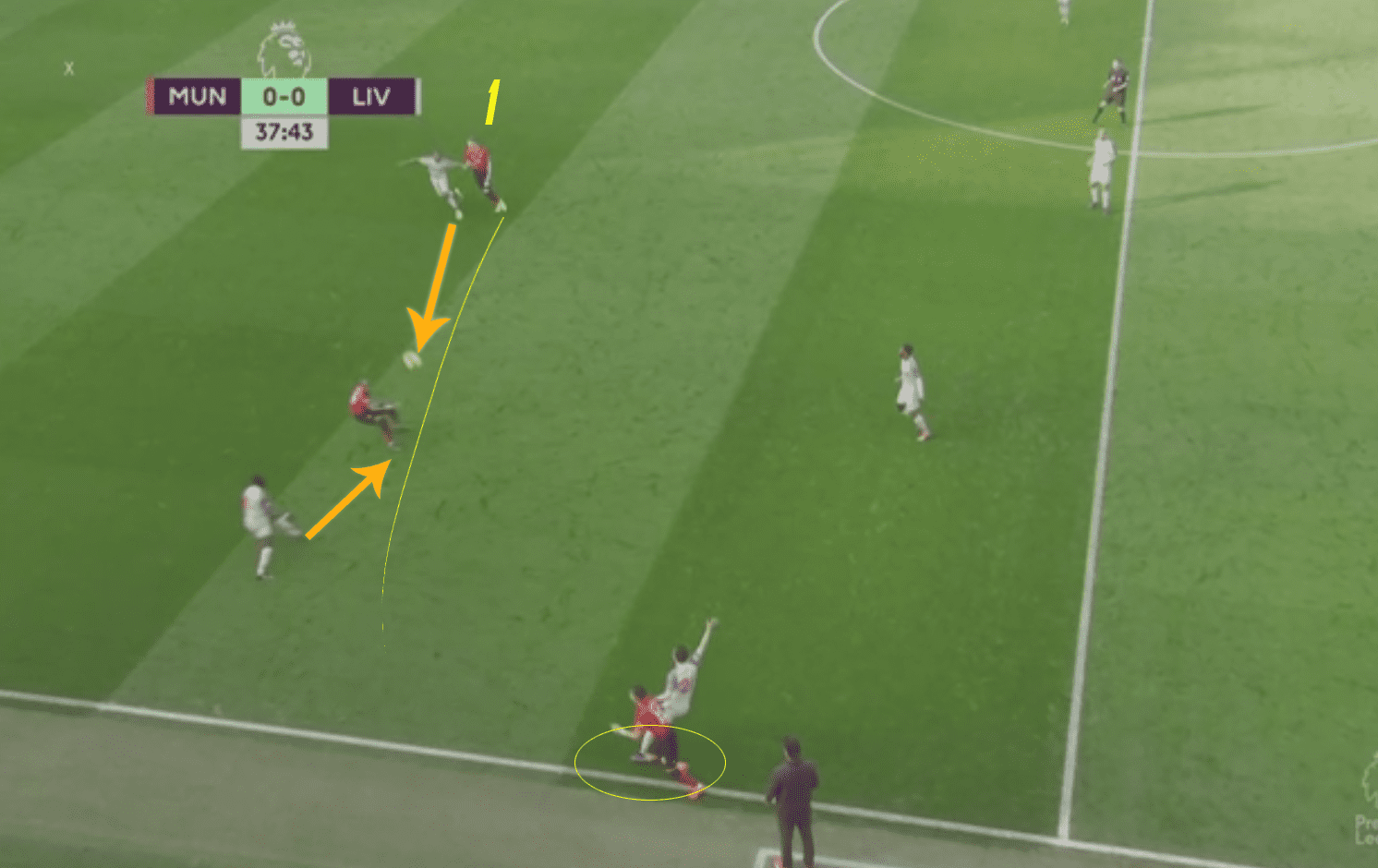
Manchester United decided to test their luck and move the ball into the wide spaces. But this is a classic Jurgen Klopp pressing trap. Once the ball is moved wide, Liverpool begin to press heavily in the German’s brand of ‘heavy metal football’.
Liverpool force the ball into the feet of Scott McTominay, who isn’t exactly the most calculated or classy passers. Liverpool then press the Scot heavily, and also Young who is off the ball, forcing McTominay to attempt to ping the ball wide. The ball goes straight out for a throw-in.
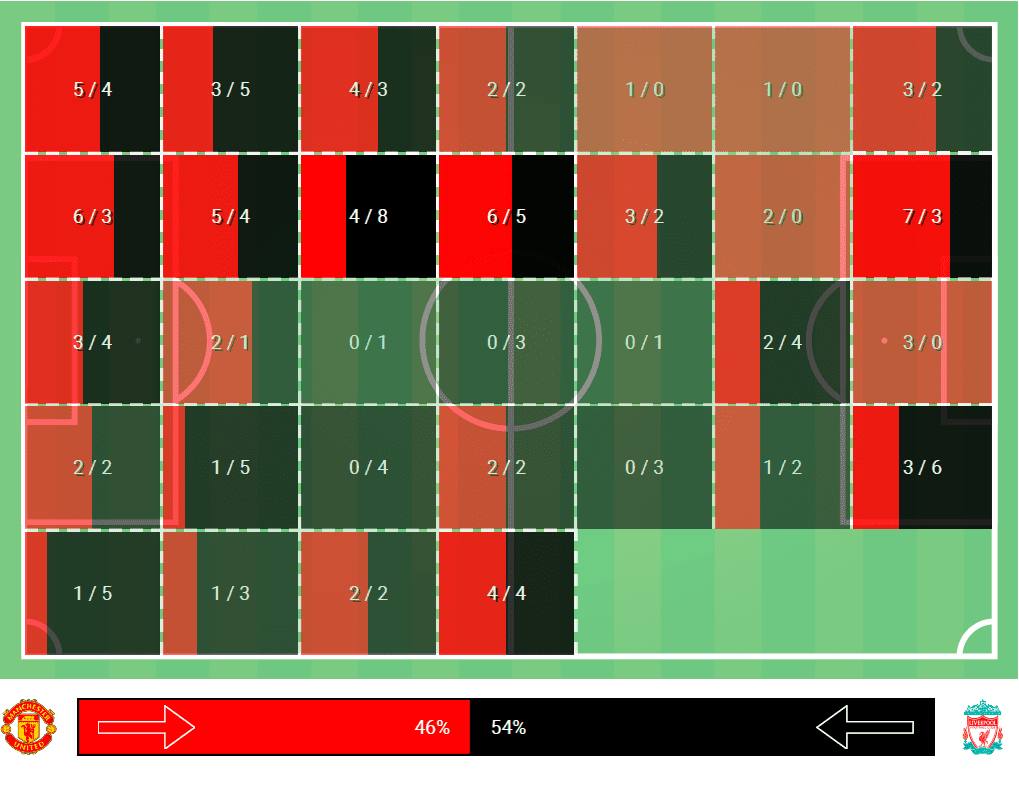
As we can see in the above image, Liverpool really pressed United out wide but were more focused on keeping their shape whilst the ball was in central areas. This clearly worked, as United mustered just three shots on target all game.
In case the image above was a bit confusing, here is a map of all of Liverpool’s recoveries in the first 45 minutes.
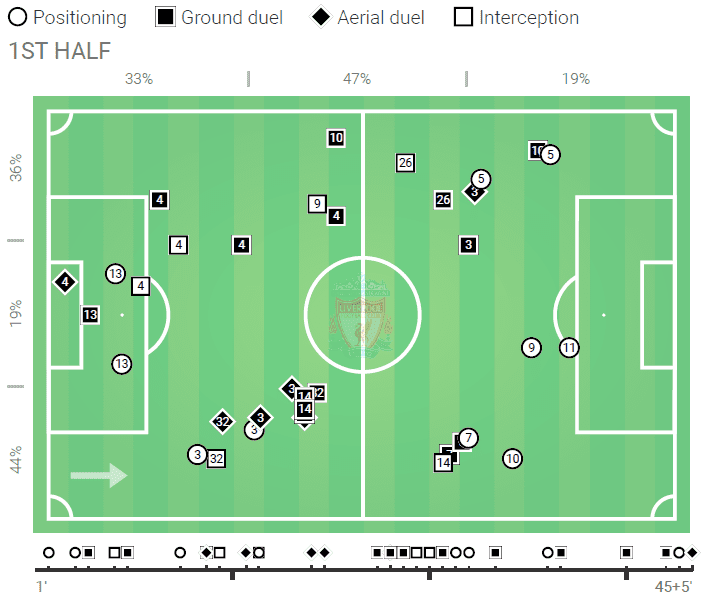
Again, look how much emphasis there was on pressing the ball in the wide areas. But why did Klopp aim to do this? Well, United are considerably open to counter-attacks when they are stretched as far wide as possible. If Liverpool could win the ball quickly, and get in behind either Luke Shaw or Ashley Young, their attacking trident of Mane, Firmino and Salah would be free to cause all kinds of chaos to the relatively fragile United backline.
Conclusion
Either set of fans could be happy with this result after such controversy involving injuries on either side, with United hit especially hard. The hosts could have seen this game ending up much worse with three injuries to very important players within 30 minutes. At one stage it seemed like Marcus Rashford couldn’t play any longer, and that was within the first 35 minutes. Jesse Lingard, a substitute himself, had to be taken off.
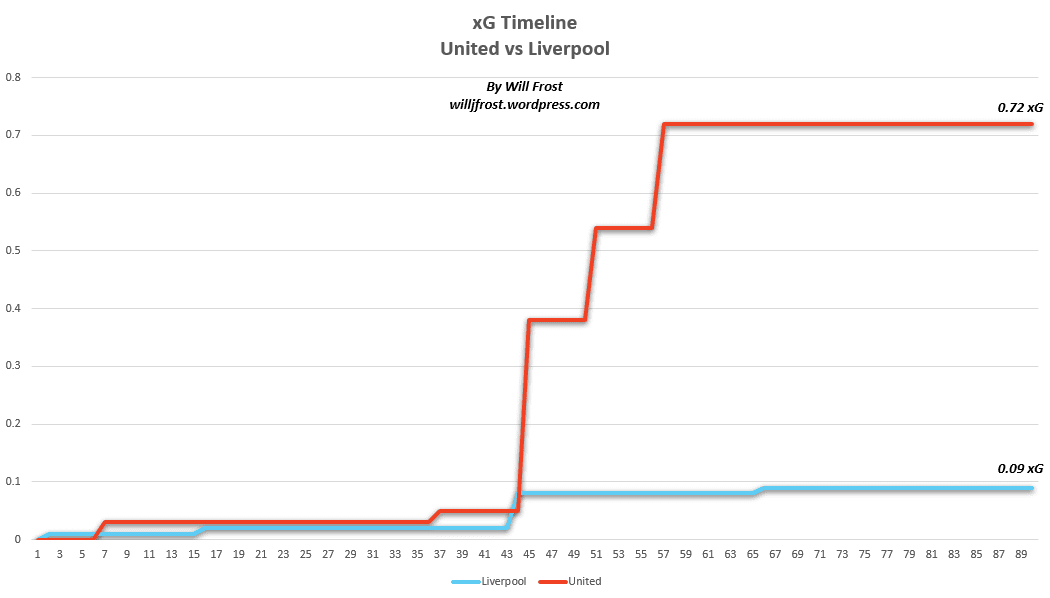
As shown in the expected goals (xG) timeline above, neither side had any real threat to either team’s goalkeeper, especially Liverpool. Even Cardiff City and Fulham routinely have a higher xG than both sides combined in this game.
With both sides’ rhythm being disrupted, this game ended up a 0-0 bore for the average fan. But for the tactical superfan, there are many unique aspects to be taken from the result, with a few shocks pulled by Klopp.
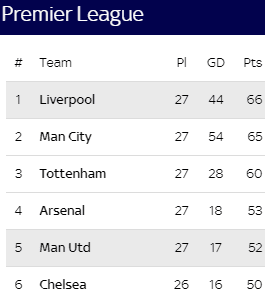
Both sides can be pleased with this result. No points would have be a catastrophe, but one is better than none. This moves United a point from the top four, something no one would have predicted after the sacking of Jose Mourinho. It also moves Liverpool a point clear of City. With Spurs losing to Burnley, that could be some pressure relieved from Liverpool’s point of view.
If you love tactical analysis, then you’ll love the digital magazines from totalfootballanalysis.com – a guaranteed 100+ pages of pure tactical analysis covering topics from the Premier League, Serie A, La Liga, Bundesliga and many, many more. Buy your copy of the February issue for just ₤4.99 here, or even better sign up for a ₤50 annual membership (12 monthly issues plus the annual review) right here.

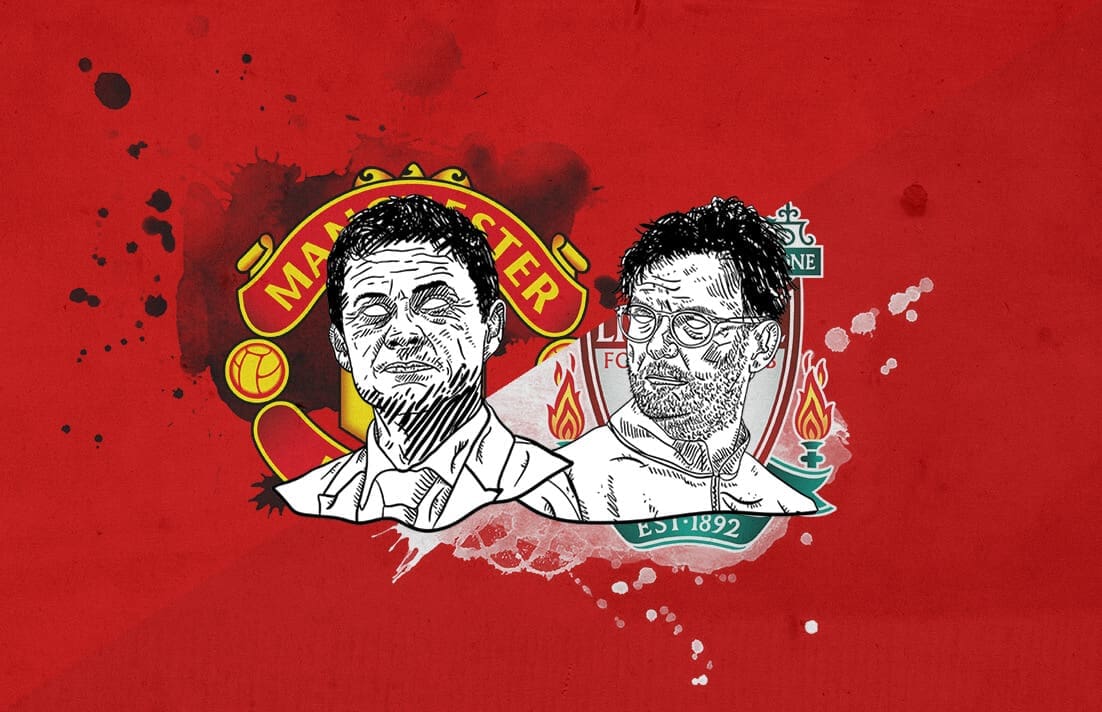



Comments